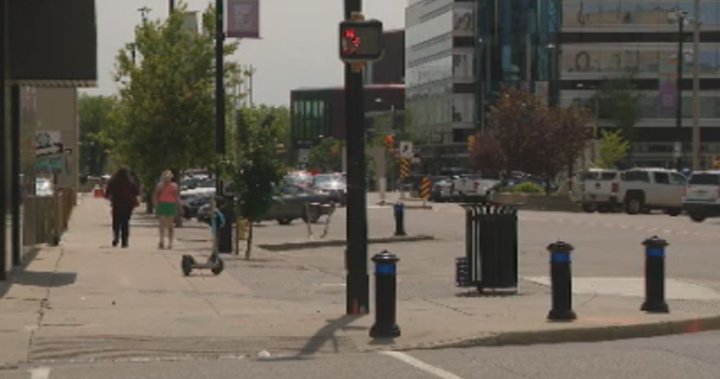Downtown Saskatoon businesses are breathing a collective sigh of relief as the city begins removing the controversial concrete barriers that have lined their storefronts for months. The barriers, originally installed as part of a pilot project to address public safety concerns, became a flashpoint in ongoing debates about downtown revitalization and social issues.
“It’s been a long time coming,” says Jill Davies, owner of Prairie Perks, a coffee shop on 3rd Avenue. “Our customers struggled to find parking, deliveries became a nightmare, and the barriers actually made some people feel more unsafe, not less.”
The City of Saskatoon announced the removal after months of feedback from the business community and residents alike. The decision follows a community safety assessment that revealed mixed results about the barriers’ effectiveness in addressing public disorder concerns.
According to the Saskatoon Downtown Business Improvement District, foot traffic dropped approximately 15% in areas where barriers were installed. The organization’s quarterly business survey indicated that 72% of responding businesses reported negative impacts on accessibility and customer perception.
Downtown business owner Mark Régnier witnessed the effects firsthand. “The barriers created this perception that downtown was dangerous, which hurt everyone. We want people to see downtown as vibrant and welcoming, not as a place that needs to be fortified.”
The barriers emerged as part of a broader strategy to address complex social issues, including homelessness, substance use, and public disorder that have intensified in Saskatoon’s urban core since the pandemic. Similar approaches have been tried in other Canadian cities with varying degrees of success.
Saskatoon Police Service reports show that while certain types of calls for service decreased slightly in barrier zones, displacement of activities to nearby areas often resulted. Staff Sergeant Kellie Puls notes that physical barriers alone don’t address underlying issues.
“These are multifaceted social challenges that require coordinated approaches between law enforcement, health services, community organizations, and various levels of government,” Puls explained during a recent community forum at City Hall.
The removal process is expected to take approximately three weeks, with crews working mainly during off-peak hours to minimize disruption to businesses and traffic flow. The city has indicated that the $380,000 initially spent on the barrier program will be partially offset by repurposing the concrete blocks for other infrastructure projects.
City Councillor Hilary Gough, whose ward includes part of downtown, acknowledges the complexity of the situation. “We heard loud and clear from businesses that while they want solutions to public safety concerns, the barriers created unintended consequences for accessibility and perception.”
The barrier removal coincides with the launch of a renewed downtown strategy that focuses on increased community outreach workers, better coordination with social services, and enhanced lighting and design elements that promote natural surveillance and community gathering.
“What we really need is investment in affordable housing and mental health supports,” says Jason Mercredi, executive director of Prairie Harm Reduction. “Physical barriers don’t address why people are struggling in the first place. They just move vulnerable people from one block to another.”
For businesses like Riversdale Records, which saw customer access significantly restricted by a barrier placed directly in front of their entrance, the removal can’t come soon enough. “We lost about 20% of our walk-in traffic,” notes owner Stephanie Harris. “People would see the barrier and assume we were closed or didn’t want customers.”
The Saskatoon Chamber of Commerce has welcomed the decision, while emphasizing that addressing downtown vitality requires sustained effort and investment. Their recent economic impact analysis suggests that perception issues around downtown safety could be costing the local economy upwards of $12 million annually in lost revenue and decreased property values.
“We need solutions that make downtown more accessible and welcoming, not less,” says Chamber CEO Jason Aebig. “Physical barriers sent the wrong message about our community.”
As crews begin dismantling the concrete blocks this week, many business owners are cautiously optimistic. The city has committed to ongoing consultation with stakeholders about alternative approaches to community safety and well-being downtown.
“This needs to be the beginning of a better conversation,” says Davies as she watches workers remove the barrier that has obscured her shop entrance since last fall. “One that includes everyone’s voices – businesses, residents, and those who are struggling. Because we all want the same thing: a downtown that works for everyone.”
The city plans to present a comprehensive downtown strategy update at next month’s council meeting, where public input will be welcomed on alternative approaches to creating a vibrant, safe, and inclusive city center.






